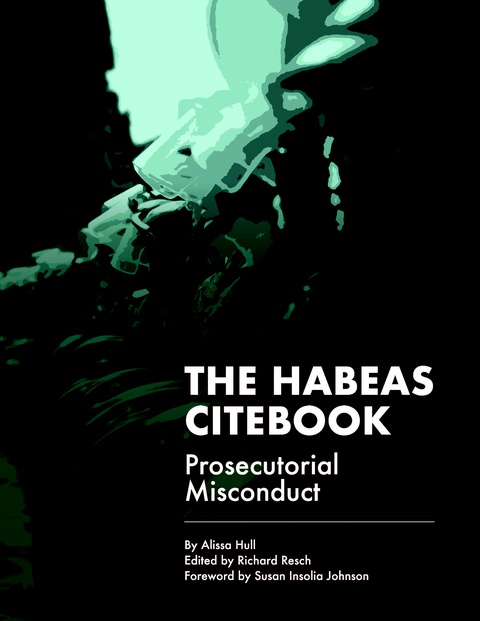by Douglas Ankney
Vehement opposition by law enforcement stopped the passage of a 2022 Colorado bill that would have banned police from lying to juvenile suspects while attempting to extract confessions. Lawmakers projecting a “tough on crime” image called the bill “anti-law enforcement” and “pro-criminal.” But mounting evidence proves that minors are highly susceptible to giving false confessions.
Wrongful convictions have revealed that teenagers are less likely to understand their Miranda rights than adults are and that teenagers tend to focus more on immediate rewards instead of long-term consequences. The Innocence Project reports that nearly 30 percent of DNA exonerations involved false confessions and roughly one-third of the defendants in those cases were 18 or younger when they falsely confessed.
Lorenzo Montoya testified in favor of the now thwarted Colorado bill. Montoya was 14 years old when he confessed to being at the scene of a murder after two Denver police detectives had badgered him for two hours. Although Montoya’s mother was present for the initial portion of the interrogation, she eventually left him alone with detectives. Montoya, without any physical evidence linking him to the scene, was convicted of first-degree felony murder and served 13 years in prison before …
by Douglas Ankney
According to Tracey Leigh Dowdeswell, forensic genetic genealogy (“FGG”) has solved 545 cases as of December 31, 2022. Dowdeswell is a professor of criminology and legal studies at Douglas College in Canada and is the first to put a number on cases solved using FGG. Dowdeswell is also the first to construct a sufficient sample frame for further research into FGG.
The birth of FGG is often tied to the arrest of Golden State Killer Joseph DeAngelo in April of 2018. Since then, investigators across the globe have repeatedly turned to FGG in attempting to solve some of their coldest cases. But FGG is not limited to only identifying perpetrators of crime. Unidentified deceased bodies have been identified, such as Joseph August Zarelli who was previously known as the Boy in the Box and
America’s Unknown Child.
Dowdeswell wrote in her paper (the “Forensic Genetic Genealogy Project V. 2022”): “I hope that this research will assist in our understanding this burgeoning investigative technique, and provide information to academic and public authorities seeking to better understand forensic genetic genealogy and formulate public polices surrounding its development and use.”
The Forensic Genetic Genealogy Project can be found on Mendeley …
by Douglas Ankney
The Supreme Court of Colorado ruled that when a party has had an opportunity at trial to present race-neutral justifications for a challenged peremptory strike under the second step of Batson v. Kentucky, 476 U.S. 79 (1986), that party is later barred from introducing new race-neutral justifications on remand.
During the jury selection at Theodore Israel Madrid’s murder trial, the prosecutor peremptorily struck a prospective Black juror identified as J.T. In response, Madrid raised a Batson challenge. The prosecution then offered the following as justification for the peremptory strike:
“Judge, first of all, he’s being replaced by another African-American juror. So, I don’t think that they can really claim that this is not race neutral. But the real problem is we don’t know very much about him. He has a hearing issue it appears, and he’s sort of completely non responsive. We have very little information on him from the questionnaire and no time really to have a very detailed conversation with him. Terribly uncomfortable with him where we have very little information.”
The trial court repeated the prosecutor’s race-neutral justifications but cast doubt on whether J.T. was hard of hearing. The trial court then espoused its …
by Douglas Ankney
The Supreme Court of Arizona held that the word “person” in the state’s self-defense justification statute, A.R.S. § 13-404(A), applies only to a defendant’s conduct, not the victim’s as well.
Jordan Christopher Ewer and two others confronted two people identified as “Gilbert” and “Emily.” Ewer drew his gun, and Emily threatened to hit him with a golf club. The two groups threw rocks at one another. Ewer and his companions backed away from the scene. Emily and Gilbert pursued them, and Ewer fired in their direction. Gilbert was struck in the back and died at the scene. Ewer was charged with second degree murder.
Prior to trial, Ewer requested the jury be instructed using the Revised Arizona Jury Instructions (“RAJI”) for justified use of deadly force in self-defense – RAJI 4.04 and 4.05; defense of a third person – RAJI 4.06; and crime prevention – RAJI 4.11. The State proposed that the word “defendant” in each of the instructions be replaced by the word “person.” The State argued that the jury could apply the justification instructions to Gilbert’s conduct as well as to Ewer’s. Over Ewer’s objection, the trial court obliged the State’s requested modifications to the …
by Douglas Ankney
The U.S. Court of Appeals for the Second Circuit held that kidnapping in the second degree under New York Penal Law (“NYPL”) § 135.20 is not categorically a crime of violence pursuant to 18 U.S.C. § 924(c)(3)(A).
In June 2021, the Second Circuit affirmed the judgment against Thamud Eldridge that included a conviction for kidnapping in aid of racketeering in violation of 18 U.S.C. § 1959(a)(1) predicated on kidnapping in the second degree under NYPL § 135.20 (Count 5); a conviction for attempted Hobbs Act robbery or conspiracy to commit Hobbs Act robbery (Count 6); and a conviction for possessing and brandishing a firearm in the furtherance of a crime of violence in violation of § 924(c)(1)(A)(ii) (Count 7). The jury verdict did not specify whether the Count 5 conviction or the Count 6 conviction was the underlying crime of violence supporting the Count 7 conviction. Eldridge had argued that it did not matter because none of his convictions qualified as a crime of violence. The U.S. Supreme Court vacated the judgment and remanded to the Second Circuit for further consideration in light of United States v. Taylor, 142 S. Ct. 2015 (2022).
On remand, the …
by Douglas Ankney
The U.S. Court of Appeals for the Eleventh Circuit, sitting en banc, held that the definition of “controlled substance offense” for purposes of the career offender sentencing enhancement under U.S. Sentencing Guideline (“USSG”) § 4B1.2(b) unambiguously excludes inchoate offenses like conspiracy and attempt, and therefore, the commentary notes are inapplicable. The Court expressly overruled prior precedent that held to the contrary, viz., United States v. Weir, 51 F.3d 1031 (11th Cir. 1995), and United States v. Smith, 54 F.3d 690 (11th Cir. 1995).
Brandon Romel Dupree pleaded guilty to possession of a firearm after having been convicted of a felony in violation of 18 U.S.C. §§ 922(g)(1) and 924(a)(2); conspiracy to possess with intent to distribute heroin and cocaine in violation of 21 U.S.C. § 846; and carrying a firearm in furtherance of a drug trafficking offense in violation of 18 U.S.C. § 924(c)(1)(A)(i).
The Presentence Investigation Report (“PSR”) revealed that Dupree had two previous convictions for controlled substance offenses. And the PSR identified Dupree’s current § 846 conspiracy conviction as a third controlled substance offense. Together, these three offenses qualified Dupree for the career offender enhancement of USSG § 4B1.1(a). With the enhancement, Dupree’s …
by Douglas Ankney
The Supreme Court of Kansas held that the Legislature intended to tie a single unit of prosecution to multiple items of drug paraphernalia in K.S.A. 2016 Supp. 21-5709(b)(1) (“§ 21-5709(b)(1)”) and K.S.A. 2016 Supp. § 21-5709(b)(2) (“§ 21-5709(b)(2)”).
After Amber Dial reported to the Miami County Sheriff’s Office that Justin Burke Eckert had beaten her, officers executed a search warrant at his home and found a tent, nine grown marijuana plants, and more than 25 drug paraphernalia objects – including propane, a blower, rolling papers, two bongs, and three fans. Ultimately, Eckert was charged with eight felony counts of possession of paraphernalia with intent to manufacture, cultivate, and plant marijuana under § 21-5709(b)(1). He was also charged with 21 misdemeanor counts of possessing drug paraphernalia to store and to introduce marijuana into the human body under § 21-5709(b)(2).
The trial court dismissed four of the misdemeanor counts. A jury found Eckert guilty of numerous offenses related to the assault of Dial as well as guilty of all the drug paraphernalia counts. The trial court sentenced Eckert to 362 months’ imprisonment. For each felony paraphernalia possession conviction, Eckert was sentenced to 11 months’ imprisonment to run concurrent to …
by Douglas Ankney
The Supreme Court of Mississippi, sitting en banc, held that the Court of Appeals (“COA”) improperly permitted the State to add to the record on appeal and the evidence presented to the trial court was insufficient to sustain a finding that Lorenzo Manuel was a habitual offender.
Manuel was convicted by jury of second-degree murder and aggravated assault for his role in the shooting death of Justin Shannon and the wounding of Keandria Mitchell. At his sentencing, the prosecution offered two prior sentencing orders into evidence and asked the circuit court to sentence Manuel as a habitual offender. Both orders stated Manuel had pleaded guilty to a charge of selling hydrocodone. When the judge asked if the two orders were identical, the prosecutor pointed out that one order had a case number of 08-1180 and the other had 08-1181. The judge then asked if the prosecution had anything further, and the prosecutor answered: “No, Your Honor, other than the fact that I believe that we’ve presented evidence that shows that he has been charged with two different felonies arising out of separate charges, separate times, and sentenced to a term of one year or more.”
The judge …
by Douglas Ankney
The U.S. Court of Appeals for the Fifth Circuit held that the federal statute which prohibits the possession of firearms by a person subject to a domestic violence restraining order, 18 U.S.C. § 922(g)(8), is unconstitutional in light of N.Y. State Rifle & Pistol Ass’n, Inc. v. Bruen, 142 S. Ct. 2111 (2022).
Zackey Rahimi was indicted for possessing a firearm while under a domestic violence order in violation of 18 U.S.C. § 922(g)(8) after officers from the Arlington, Texas, Police Department executed a search warrant at his home and found a rifle and a pistol. Rahimi moved to dismiss the indictment on the ground that the statute is unconstitutional, but he acknowledged that United States v. McGinnis, 956 F.3d 747 (5th Cir. 2020), foreclosed his argument.
The U.S. District Court for the Northern District of Texas denied his motion, and he pleaded guilty. On appeal, a panel of the Fifth Circuit agreed that McGinnis foreclosed Rahimi’s argument. While Rahimi’s petition for a rehearing en banc was pending, the U.S. Supreme Court decided Bruen. The panel withdrew its opinion and ordered supplemental briefing on the impact of Bruen on Rahimi’s case. Rahimi then contended …
by Douglas Ankney
In a case of first impression, the Supreme Court of California clarified that proof of first-degree murder by means of poison requires the prosecution to show that the defendant deliberately gave the victim poison with the intent to kill the victim or to inflict injury likely to cause death.
Heather Rose Brown placed her sleeping five-day-old daughter, Dae-Lynn Rose, face down on the bed between her and Dae-Lynn’s father, Daylon Reed. While the three of them slept, Dae-Lynn stopped breathing. When Brown awoke and discovered her baby was warm but not breathing, she directed Reed to call 911. The 911 dispatcher instructed Brown in administering CPR until paramedics arrived. Unfortunately, Dae-Lynn was pronounced dead upon arrival at the hospital.
An autopsy report revealed that Dae-Lynn died from exposure to methamphetamine and heroin. Brown admitted that she and Reed smoked both heroin and methamphetamine but not in the same room as Dae-Lynn. However, she fed Dae-Lynn breast milk and baby formula shortly before she died.
Brown was prosecuted for first degree murder on the theory that Brown poisoned her newborn daughter by feeding her breast milk after smoking methamphetamine and heroin. The superior court instructed the jury that …





